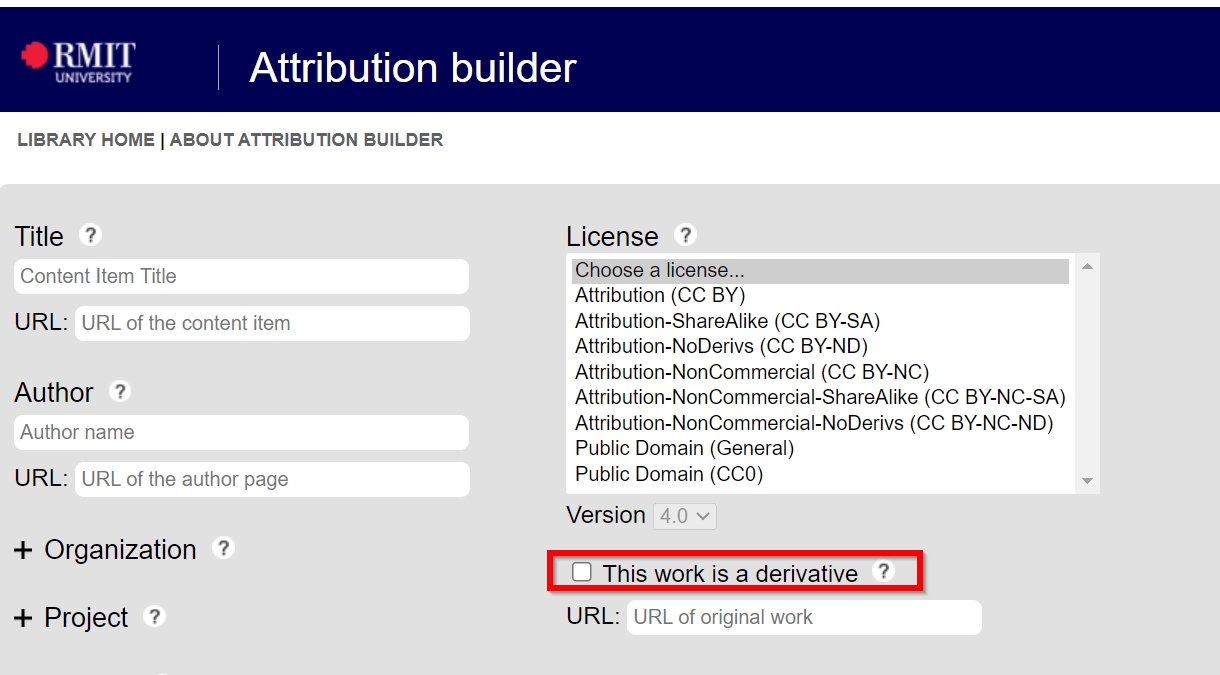7 Attribution, citation and referencing
Attribution, citation and referencing: what’s the difference?
Citations, attributions and reference lists work together to meet academic integrity standards and legal copyright requirements, and they also enable your reader to locate your sources. They have different formats and purposes.
Features of attribution, citation and referencing
What |
Purpose |
How |
|
CitationStandard in academic practice |
|
Sign-posts that the information is from another source and acknowledges the original author(s) | Directs the reader to the full details of the cited material in the corresponding entry in the reference list |
AttributionLegal requirement when using Creative Commons licensed material |
|
Fulfils the legal requirement of reuse. | Hyperlinks to the original online location of the work and to the terms of the Creative Commons licence. |
Reference listStandard in academic practice |
|
Enables the reader to find the source material in its original published format, and understand any Creative Commons terms of reuse. | Provides full bibliographic details, and hyperlinked Creative Commons licence type if applicable. |
General guidelines for acknowledging sources
Quotes and paraphrases
Use citations and referencing for quotes and paraphrases from any written source, either Creative Commons or non-Creative Commons.
- Choose a citation style as a basis and record it in your Style Sheet along with any variations you choose to make. See RMIT University Library resources on referencing.[1]
- Use the inbuilt footnote tool in Pressbooks even when the citation style you are using as a basis is an in-text style such as APA. This allows readers to quickly jump via the footnote number to the reference, and provides a numerically ordered reference list at the end of each chapter.
- Build your footnoted references as you normally would, according to your citation style.
- For Creative Commons sources, add the hyperlinked Creative Commons licence type at the end of the footnoted reference. See Chapter 8: Acknowledging Creative Commons and public domain sources for details and examples.
Media, figures and tables
Media, figures and tables from Creative Commons sources
- Use the RMIT University Creative Commons Attribution Builder [3] to build attributions.
- Be sure to tick the box ‘this work is a derivative’ if the resource you are using is a derivative of an original work, providing the URL of the original, shown below.

See Chapter 8: Acknowledging Creative Commons and public domain sources for details, including where to place the attribution within your text.
Media, figures and tables not based on Creative Commons sources
Media, figures or tables created by third parties will need a permission statement or other acknowledgement.
See Chapter 8: Acknowledging Creative Commons and public domain sources for details, including where to place the attribution within your text.
- RMIT University Library. (n.d.). Referencing. https://www.rmit.edu.au/library/study/referencing ↵
- Australian Copyright Council. (2020). Quotes and extracts. https://www.copyright.org.au/browse/book/ACC-Quotes-and-Extracts-INFO034 ↵
- RMIT University Library. (n.d.). Creative Commons attribution builder. https://www.lib.rmit.edu.au/attrib/attribution-builder.html ↵

